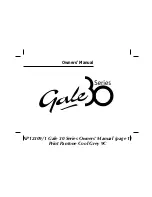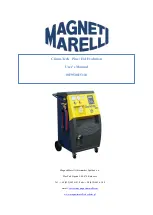
13
AGITATION
During the weld, a high frequency agitation feature can be used to improve weld formation and strength .
Additional energy is added to the weld in the form of micro energy bursts . These energy bursts occur at a
rate of up to 600 times per second . Using agitation can produce an audible, high-pitched “ping” noise .
NONE -
With “None” selected, no agitation is added to the weld . This is the standard weld discharge curve
with a smooth slope .
SLOPED -
The Sloped agitation option offers low levels of agitation . It has minimal impact on spot size
formation, but yields additional penetration and enhanced weld strength .
SUSTAINED -
The Sustained option offers high levels of agitation for improved weld spot strength in some
metals . The high levels of agitation energy will affect the spot size because of the extra energy used in this
option . To compensate for this addition of agitation energy, it’s recommended to lower the overall weld
energy slightly when using this option .
*Sloped and Sustained Agitation can increase weld penetration with minimal effect to the size of the heat
affected zone . Enabling these can make a big difference in weld outcomes, so exercise caution .
LENGTH
Length adjusts the amount of time that the energy is discharged from the welder . In classic waveform
mode, the length will automatically adjust to the recommended time as the users adjust the power dial . In
the Triangle and Square waveform mode, the length will not adjust automatically . Users will set the length
and power independently in Triangle and Square waveform modes . Increasing or decreasing Length allows
for more or less total weld energy and will change the size and penetration of the weld spots .
WELD DISCHARGE SHAPE
After choosing the waveform, agitation, ignition, length and power you will have a weld discharge shape .
This shape is displayed on the screen in the blue section . As you adjust those 5 parameters the weld
discharge shape will change . The weld discharge shape and energy can be adjusted to fit the needs of
the metals being welded as needed . It is often best to start at a low energy with maximum length and no
agitation, then add energy in small increments as needed . Changing weld length will help fine tune the
results .














































